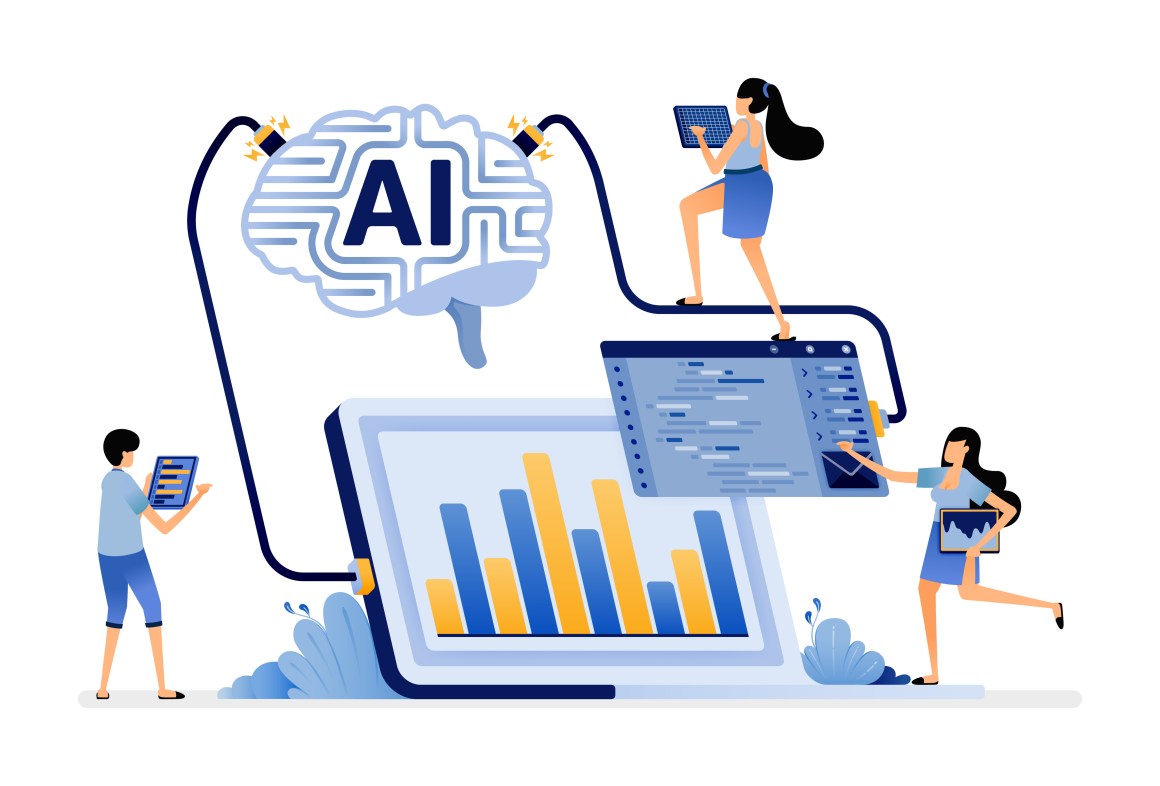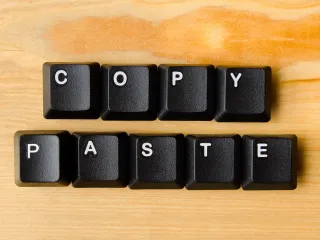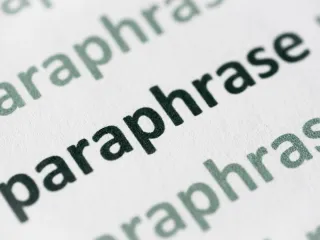Artificial intelligence (AI) has been around for years, but with the recent launch of Chat GPT, a unique chatbot, the usage and relevance of these types of platforms have increased exponentially.
AI technology is a great thing in many capacities, but when it comes to unique writing and school work, it can be a huge problem when used for plagiarism rather than research. Nothing can replace the importance of human-written content, but with the rise in popularity of AI technology, students are turning to it more and more.
As a teacher or professor, ensuring that your students are using their knowledge and research tools rather than AI can be challenging, but that’s where AI detectors come in. Let’s discuss the importance of AI detection tools, openAI, and more.
What is AI Detection?
With more and more AI tools coming out, more AI detection tools are going to appear. These tools are there for people to use to find out whether a human writes a piece of content, paper, or another type of writing, or if it utilizes AI writing tools.
Machine-generated learning and natural language models work with the AI checker to determine whether the writing is AI or not. Most of these detectors won’t say it is or isn’t AI but will provide you with what percentage it believes is AI versus human-written.
These AI detection tools will use predictable patterns with wording, sentence structures, and more to estimate whether something is AI or not. While they have the coding to do this, they don’t know how to understand the context and meaning of the written words. The tools use the word to the left and right of the current word to predict the level of AI content.
They can often provide false positives for AI writing due to not having the knowledge base that a human would. They do rely on looking for plagiarism, which is typically a sign of AI-generated content.
How Do AI Content Detectors Work?
So, how do AI content detectors actually work? They work by using an extensive database of AI-generated and human-written content to look for patterns within the writing. Their datasets allow them to look for patterns that are associated with AI and human writing so they can decide on the likelihood that content is AI versus human.
AI detection tools are not the end-all when determining whether something is AI or not. While they might have robust machine learning algorithms, they are not perfect by any means. You can use them, but you might need to read through the content yourself to determine if there’s AI or any plagiarism that it might not have detected.
These tools do their best to use natural language processing, but they’re still computer programs and not real people. Even the best AI language models will make mistakes here and there, especially when there are typos in the piece of text.
We recommend using a plagiarism checker in addition to AI detection tools if you plan on using them. There are many cases where AI detectors will state that something is mostly AI when it isn’t, and vice versa.
Whether you can or should trust AI detectors gets tricky. Even the best AI language models, like the ones from MIT and IBM, have their faults, so you’ll need to use your discretion on whether you can trust them. Many people do trust them, but when using them, you have to take the results with a grain of salt because the technology is always improving.
Use Cases for AI Content Detection
The rise in AI usage is increasing the need for people to use AI content detection tools. A lot of people can benefit from using AI detection tools. Some of the people who might want to use these tools and the reasons they might include:
- Students: They can check their work before submitting it and help with source credibility.
- Educators: Educators can check that their students are writing their own work and that they’re not plagiarizing content.
- Content Writers/Managers: Content writers and managers can use AI detection to help as a citation generator and to make sure that they’re not publishing AI content that will decrease their SEO rankings on search engines.
- Publishers: These people can use AI detection tools to ensure they’re publishing human-written text and check for misinformation before publishing.
- SEO Managers: SEO managers can take a piece of writing and run it through AI detectors to ensure no fake news or AI content will lower their SEO rankings.
- Social Media Moderators: These individuals can use AI detection tools to ensure their accounts are writing human content and that they’re not spreading fake news or plagiarizing anything.
Most Popular AI Detector Tools
Whatever your job or reason you have for wanting to utilize AI detection tools, there are a lot of them out there to choose from. While no AI tool is perfect, some are better than others.
When you use a search engine to look for an AI detection tool, some will appear higher than others because they’re used the most and the most reliable. Here’s a look at the five best and most popular AI detector tools and what makes them great and different from one another.
Quetext
First, we have Quetext. While it’s technically a plagiarism checker, most AI detection tools use plagiarism checkers to determine whether something is AI or not. Quetext is your one-stop shop for plagiarism, building citations, and checking for any other writing issues.
We offer a free plagiarism detection tool that allows you to copy and paste your writing into the box simply, and it will begin checking once you click “check.” This tool uses three main things to evaluate text for plagiarism and potentially AI writing.
Quetext utilizes deep search technology, which helps identify any content that could come from another source that’s not you. We use contextual analysis, fuzzy matching, and conditional scoring to determine.
We’ll outline the parts of the text that are pinged for plagiarism and even suggest using our citation generator if it makes sense in the context of your writing. Using this feature, you can reduce your plagiarism score and, therefore, reduce your risk of people thinking your writing is AI-generated.
This tool is excellent for anyone who needs to write. We recommend it for teachers, students, copywriters, and anyone in an industry who needs to avoid plagiarism.
Originality.ai
Originality.ai might be the market’s most well-known AI detection tool right now. It’s risen to popularity about as fast as Chat GPT. It’s software designed to detect AI from Chat GPT and GPT-4.
Unlike some other AI detectors, this one is made specifically to help content marketers, SEO managers, and content writers ensure they’re not plagiarizing and lowering their ranking on search engines due to AI content.
Oritinality.ai was built by a team of industry professionals specializing in marketing and content creation, so they have a strong knowledge of what constitutes AI-generated content.
You can use their online platform to run writing through their analysis, but they also have a Google Chrome extension that now works directly in Google Docs, Google Sheets, etc.
This particular feature makes this tool stand out amongst the rest, and it provides those looking at the AI percentage a glimpse into the writing process, whether the writer is copying and pasting a lot and whatnot.
Originality.ai claims to be one of the most accurate AI detectors available. While many believe it’s highly accurate, it’s improving every day to provide fewer false positive results. There are times when it’s not as accurate as it could be. For instance, an entirely human-written piece flags AI on occasion.
Turnitin
Turnitin is arguably the most popular AI and plagiarism detection tool teachers and other educators use. It’s mainly used at the college level, but more and more teachers are turning to it thanks to the rise in AI writing.
Its experience is better for school work like research papers, creative writing, etc. When you run your or your student’s paper through Turnitin, it uses a dataset of published papers to determine if there is any plagiarism on the student’s part.
It’s similar to other detection tools in the sense that it provides you with a percentage at the end of what amount of the paper is plagiarism and what isn’t. Using a plagiarism and AI detector also allows teachers to see if they include citations at the bottom of their work.
While it started as solely a plagiarism detection tool, it has evolved to include AI detection since more students are trying to get away with using that and not their own knowledge.
How well Turnitin works on online content isn’t widely known because its niche is in the education sector. Based on the information on the tool, it’s likely that it wouldn’t be as accurate for online-based content as it is for research papers and other similar styles of writing.
Content at Scale
Content at Scale is a unique AI detection tool because it’s also a platform where you can use AI to write online content. Content at Scale recognizes that AI is part of the future of SEO writing and that sometimes it’s better to work with it rather than against it. It’s definitely not for everyone, but it’s one factor that makes this tool stand out among the others.
Moving onto their AI detector, it knows that Google can detect AI content and actually lower your rankings. When your rankings are lowered, fewer people are likely to see your content, which can decrease your sales, website traffic, and credibility as an authoritative website.
The difference with this AI detector tool is that it can recognize patterns and probability that your content is AI. Still, then it uses a formula to make the AI content you want to use undetectable.
Using Content at Scale is better for those working in the copywriting industry and not for students because it strongly focuses on online content and not the type you’d use in college or high school.
As with all other AI detection tools, this one isn’t perfect, but many people and online content agencies rely on it daily to ensure they rank higher on Google and other search engines.
Generative AI
Last but not least, there’s Generative AI. Generative AI is another online tool that is taking advantage of AI technology and providing online content writers and publishers with a tool to ensure that what they’re getting ready to publish doesn’t sound like AI writing.
They have been exploring using AI, so they have a strict algorithm for their AI detector that has proven to work well in many cases. It’s ideal for online content because it will run provided content against hundreds of patterns and other articles to ensure it sounds human rather than AI.
Like other tools, it will run your written content through its platform and then provide you with a percentage of what sounds like AI and what is more human-sounding. You’ll need to read through it yourself because no AI detection tool is perfect.
They’re constantly updating their algorithm to improve on it in order to be better at detecting AI content, which is another thing that makes them one of the best because they constantly want to improve.
Conclusion
AI technology can be a great thing, but nothing replaces human-written content when it comes to content writing. As these tools are increasing in use, so are AI detection tools. These tools work by using datasets with patterns they look for to determine how much of a piece of text is AI or human-written.
While these tools are great, they aren’t 100% accurate all of the time. It’s essential to use a solid plagiarism checker in addition to these if you plan on using them. Quetext is your trusted plagiarism detection tool. Contact us today or visit our website to learn more about our plans and to get started.









